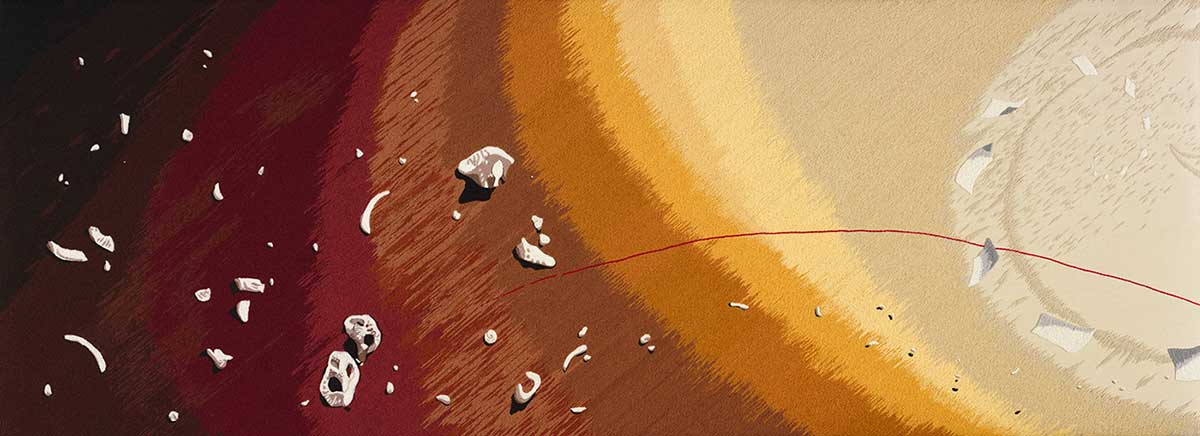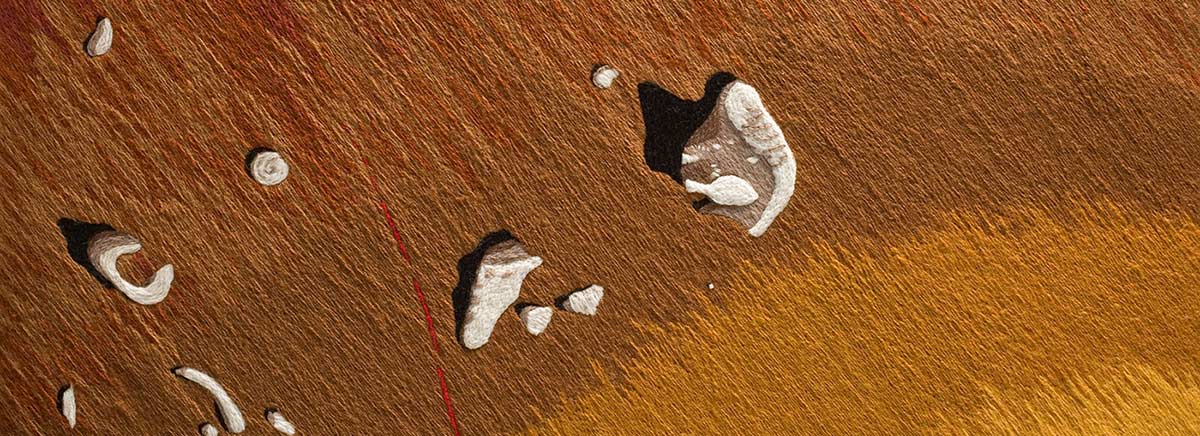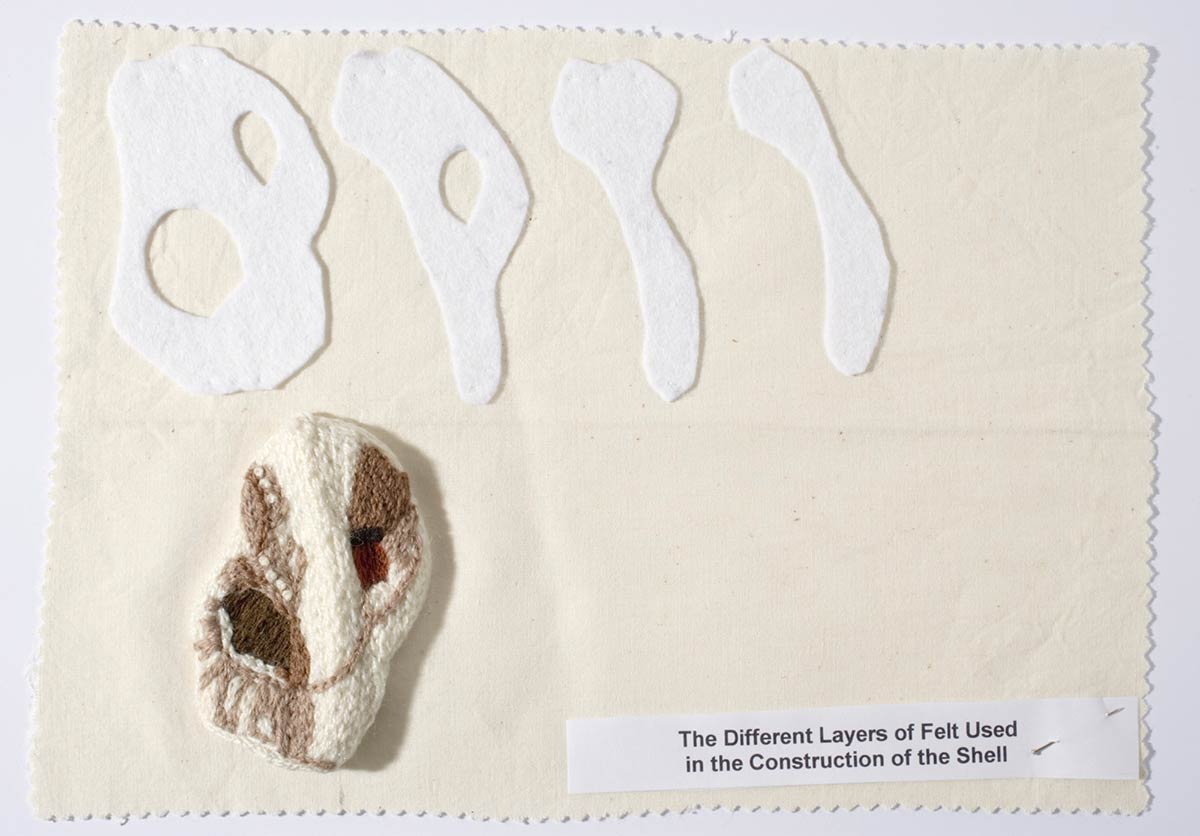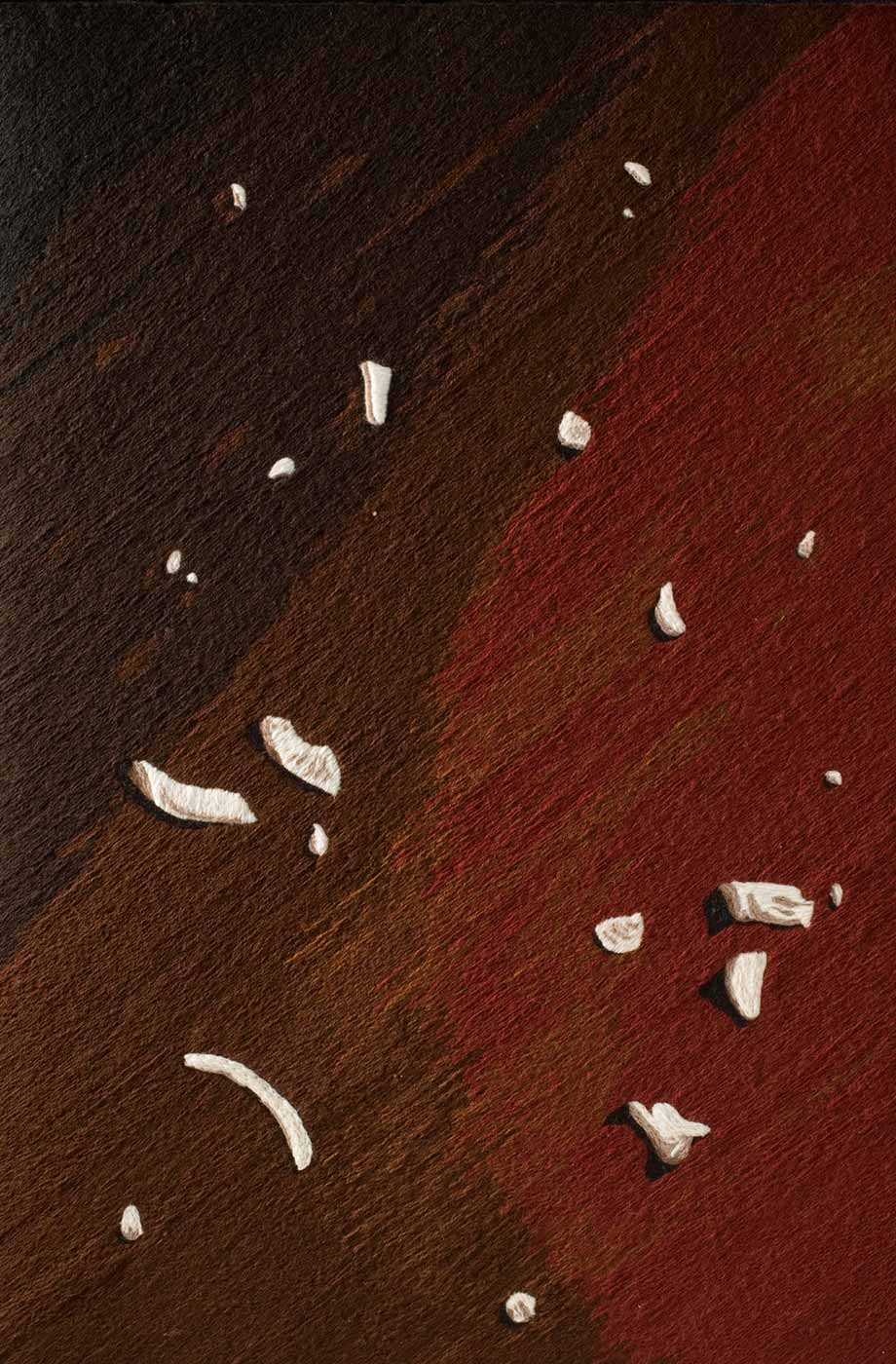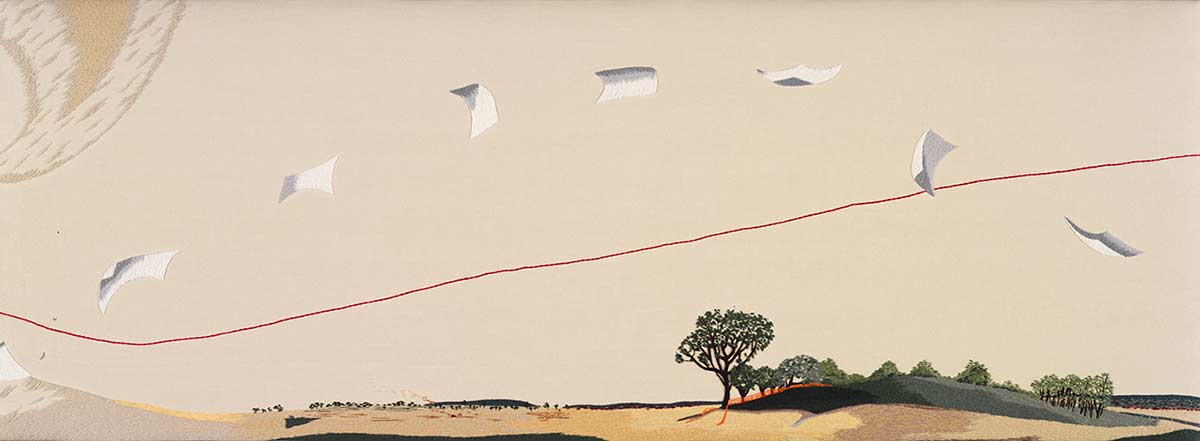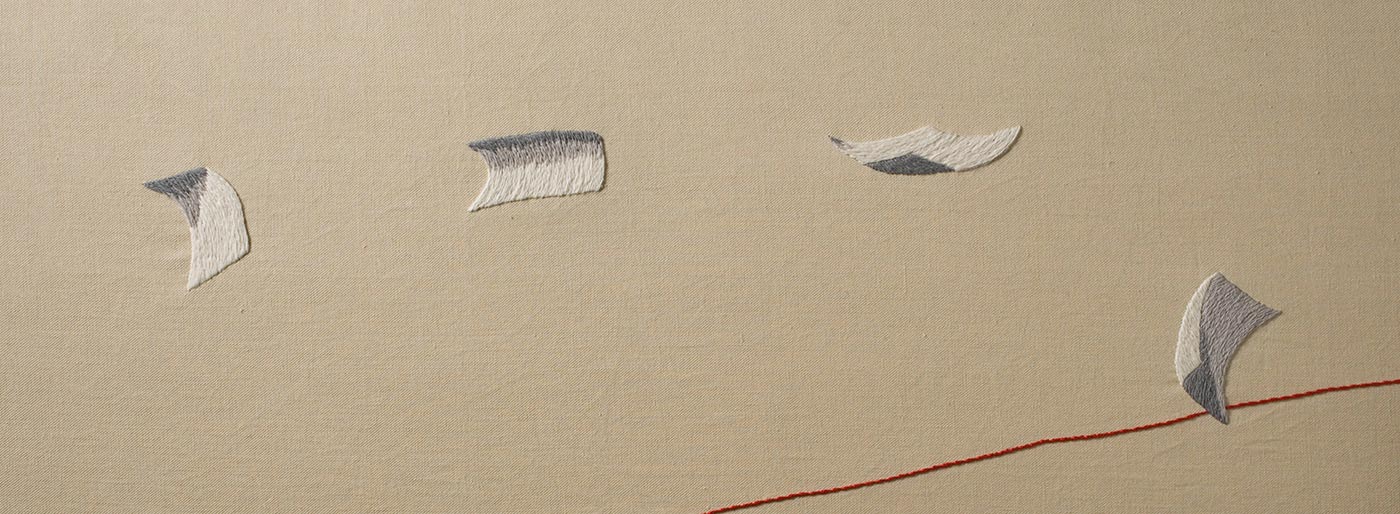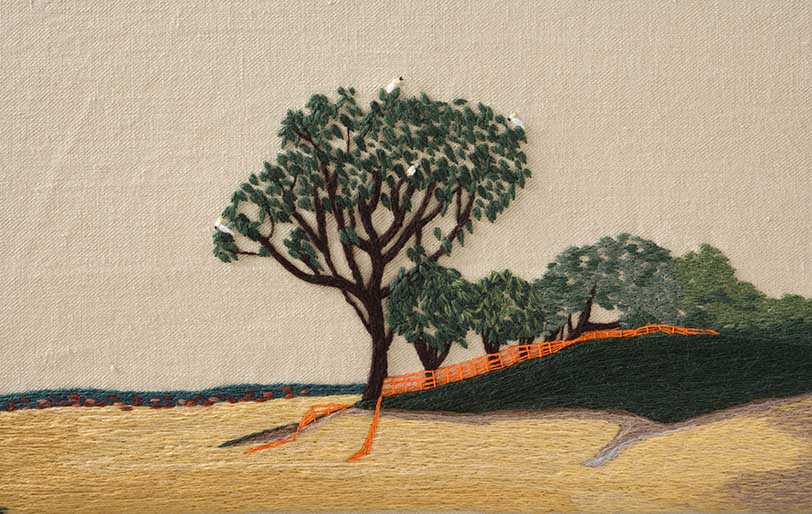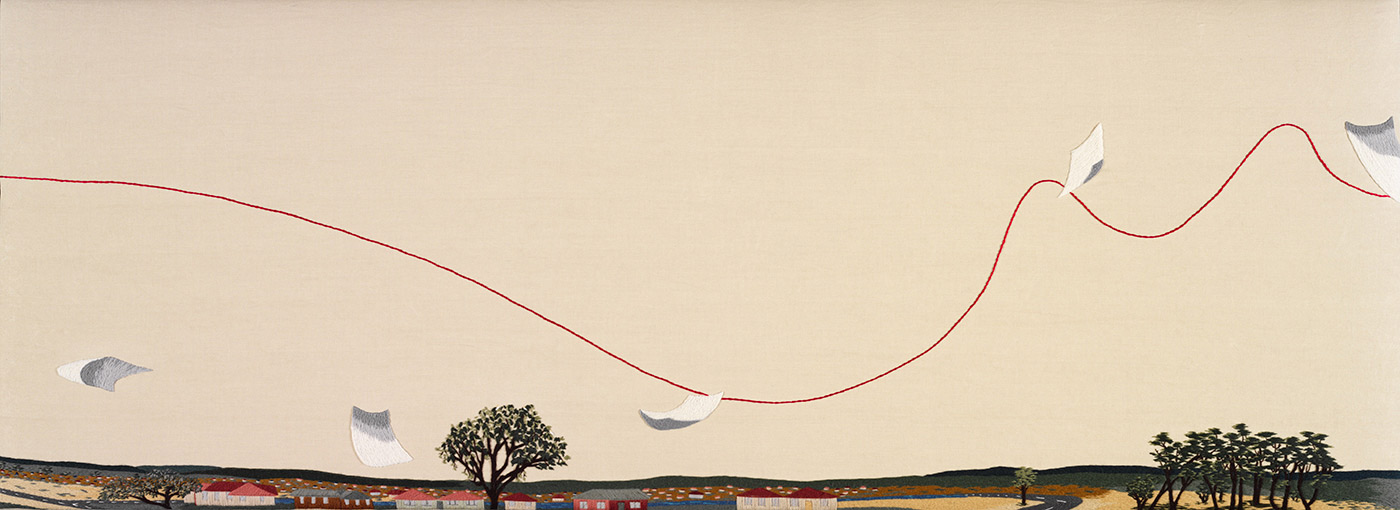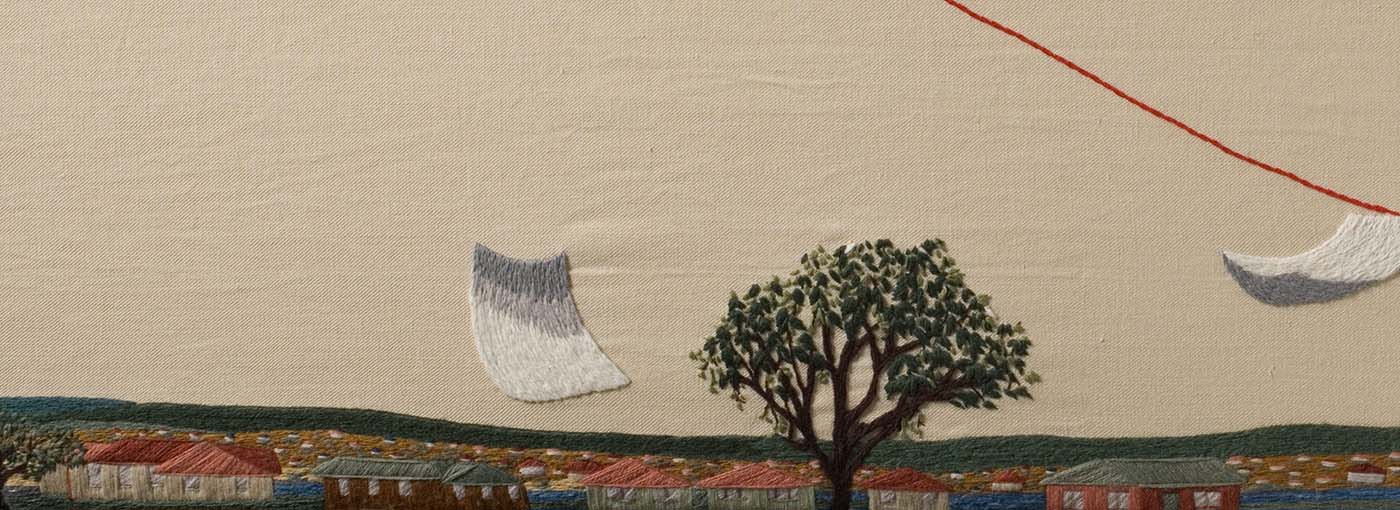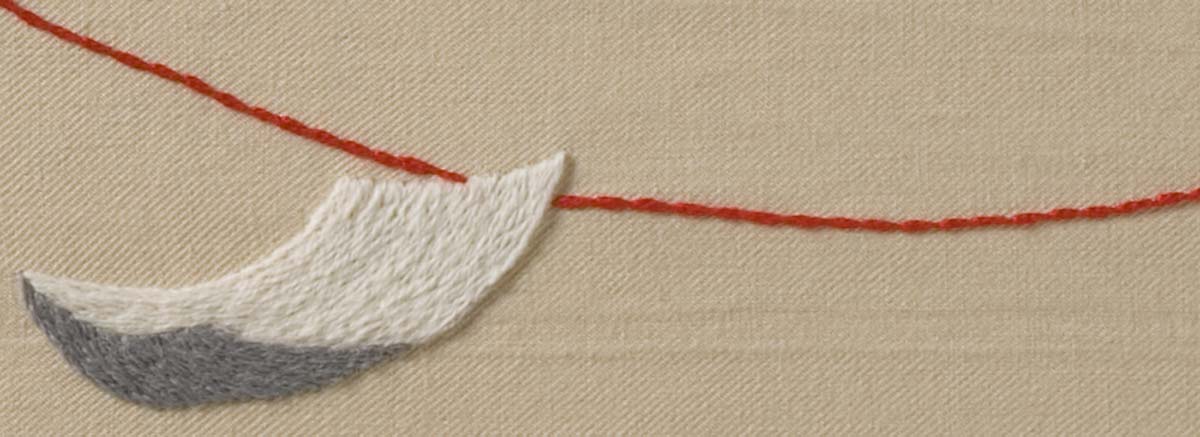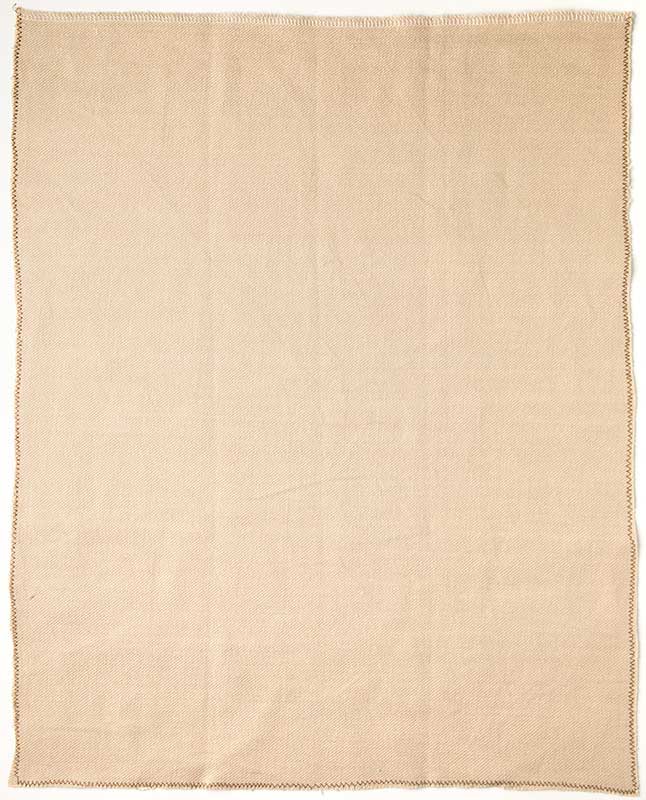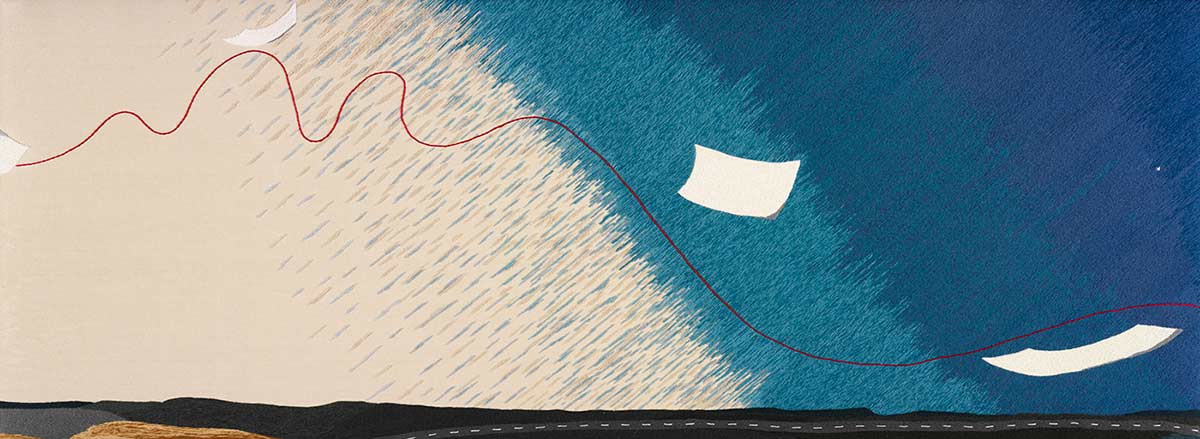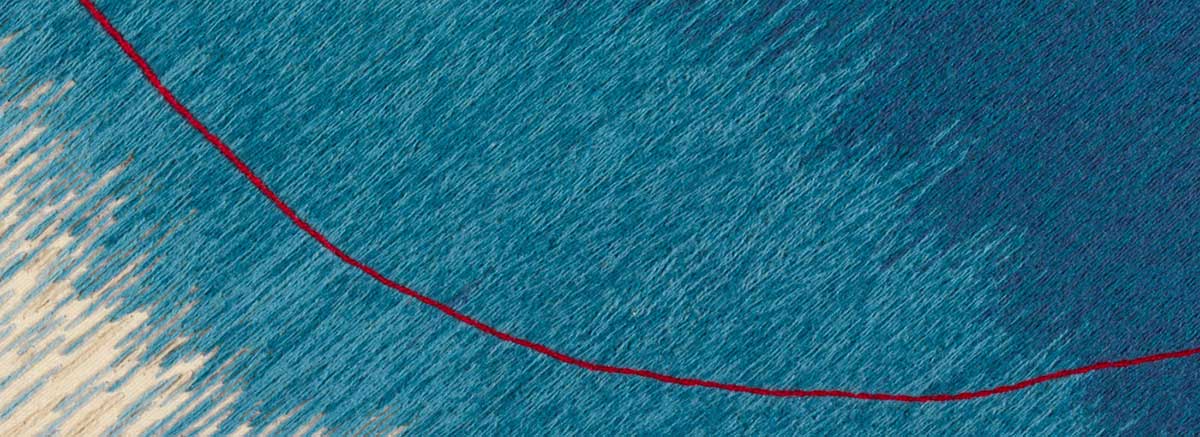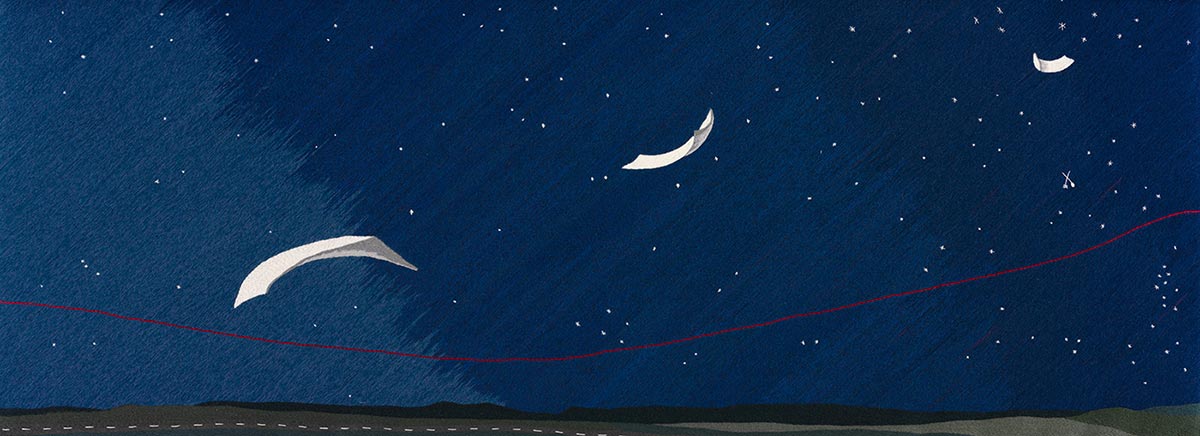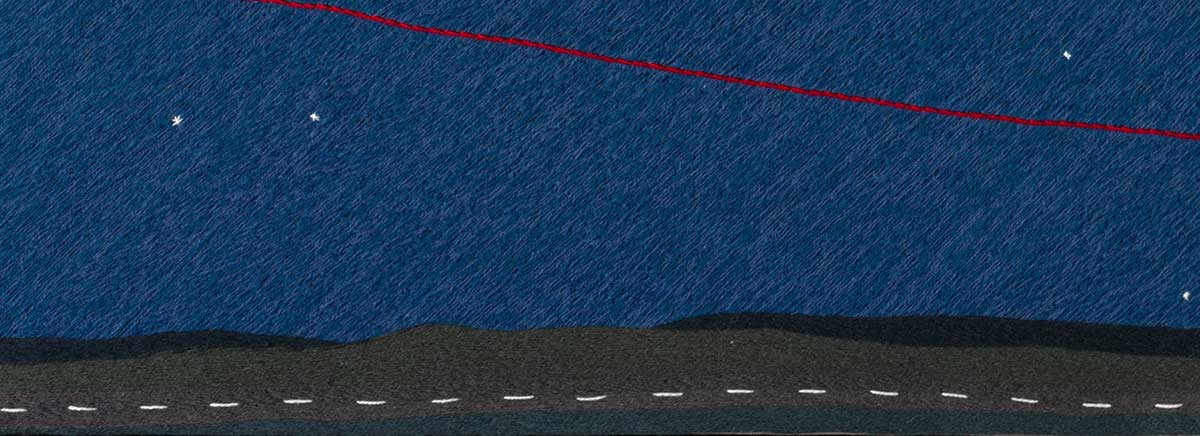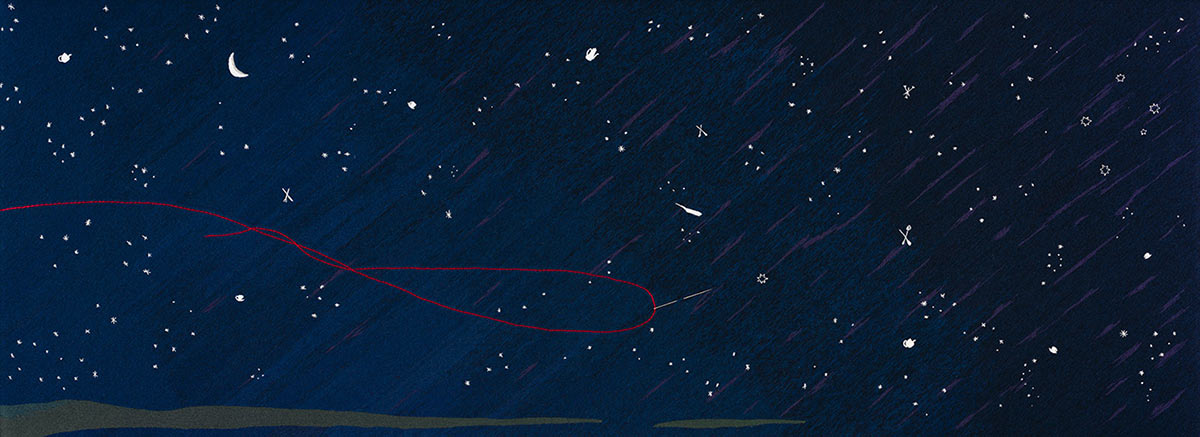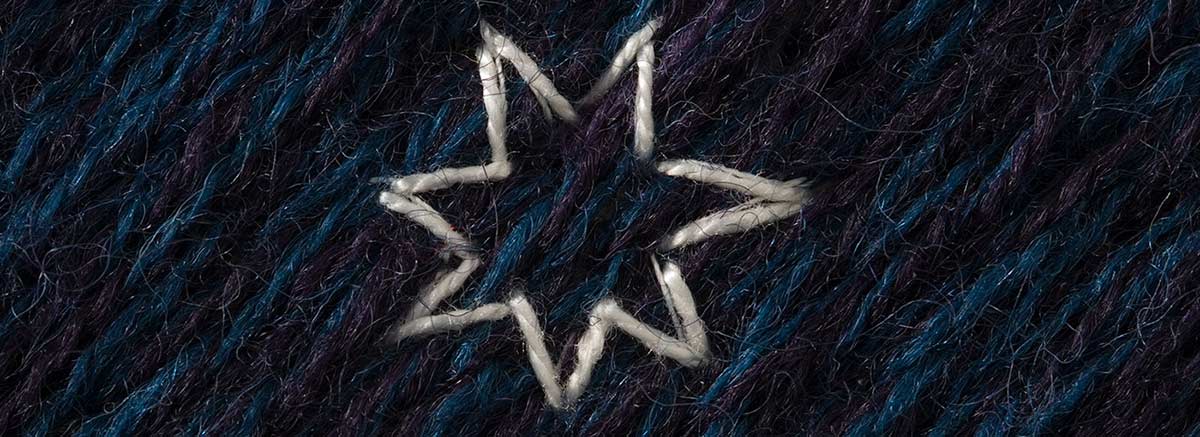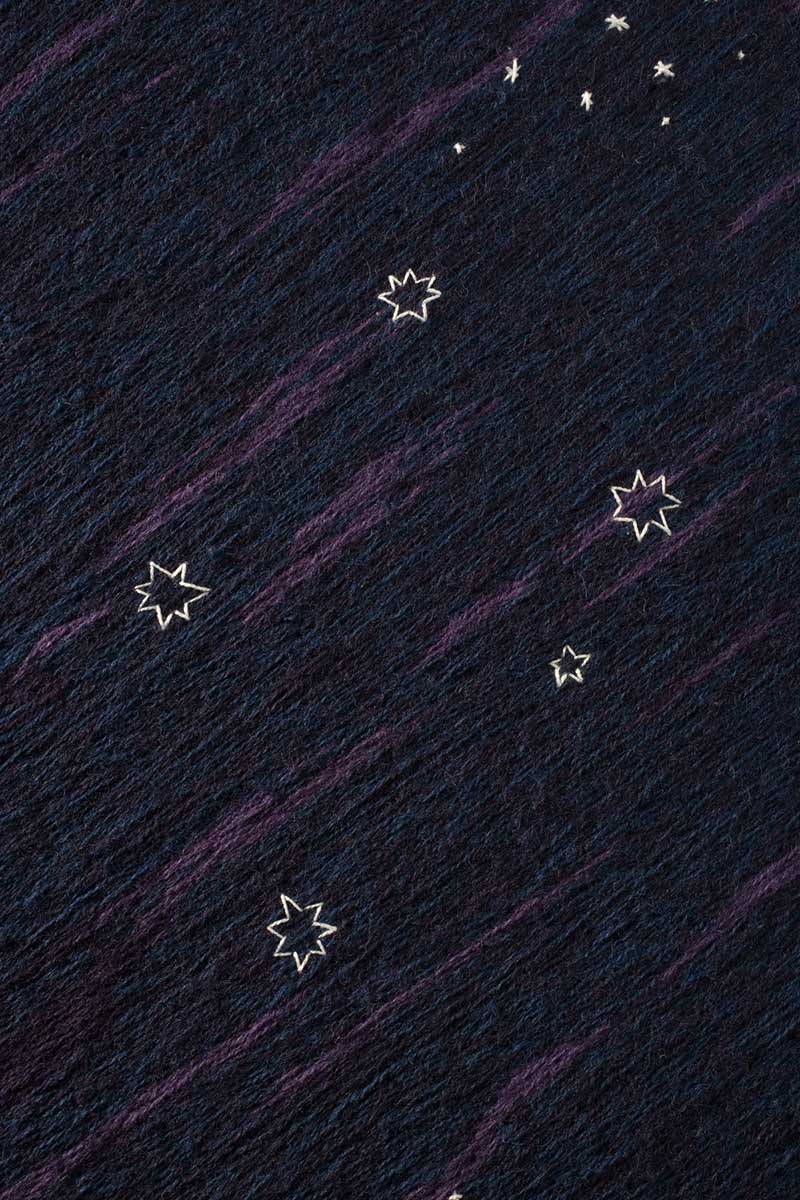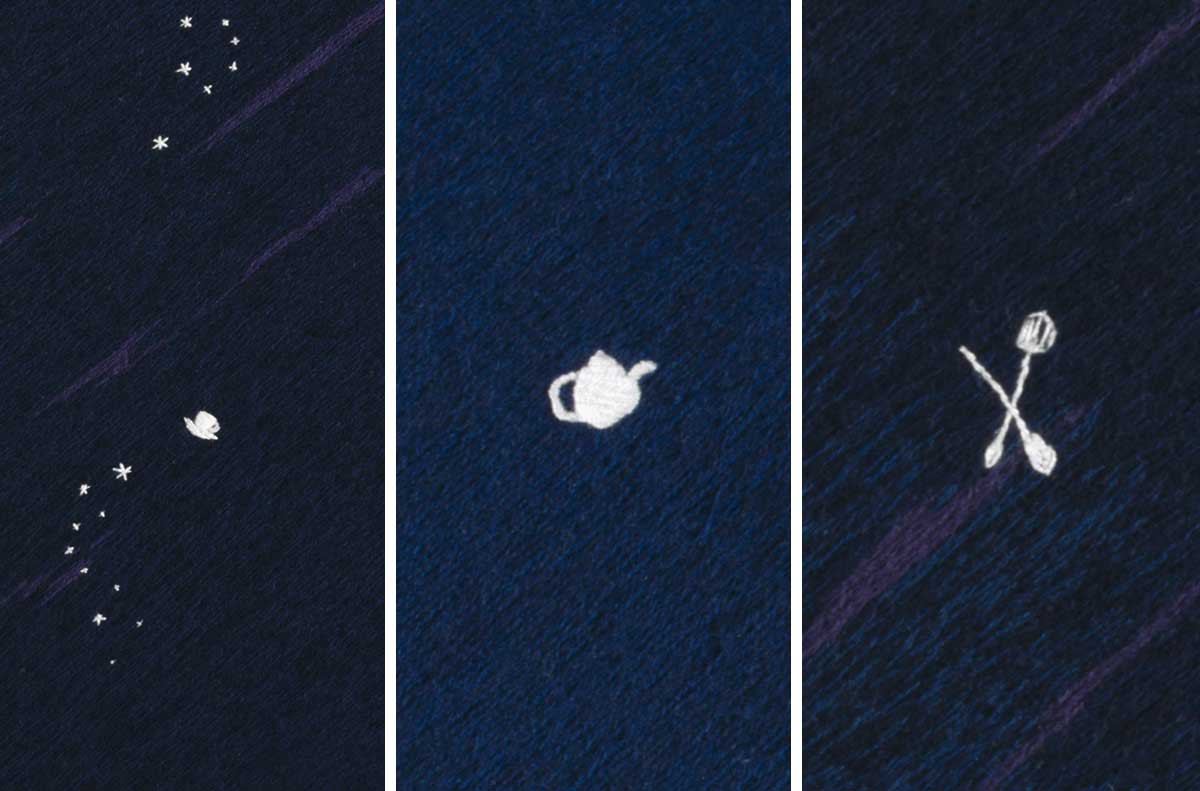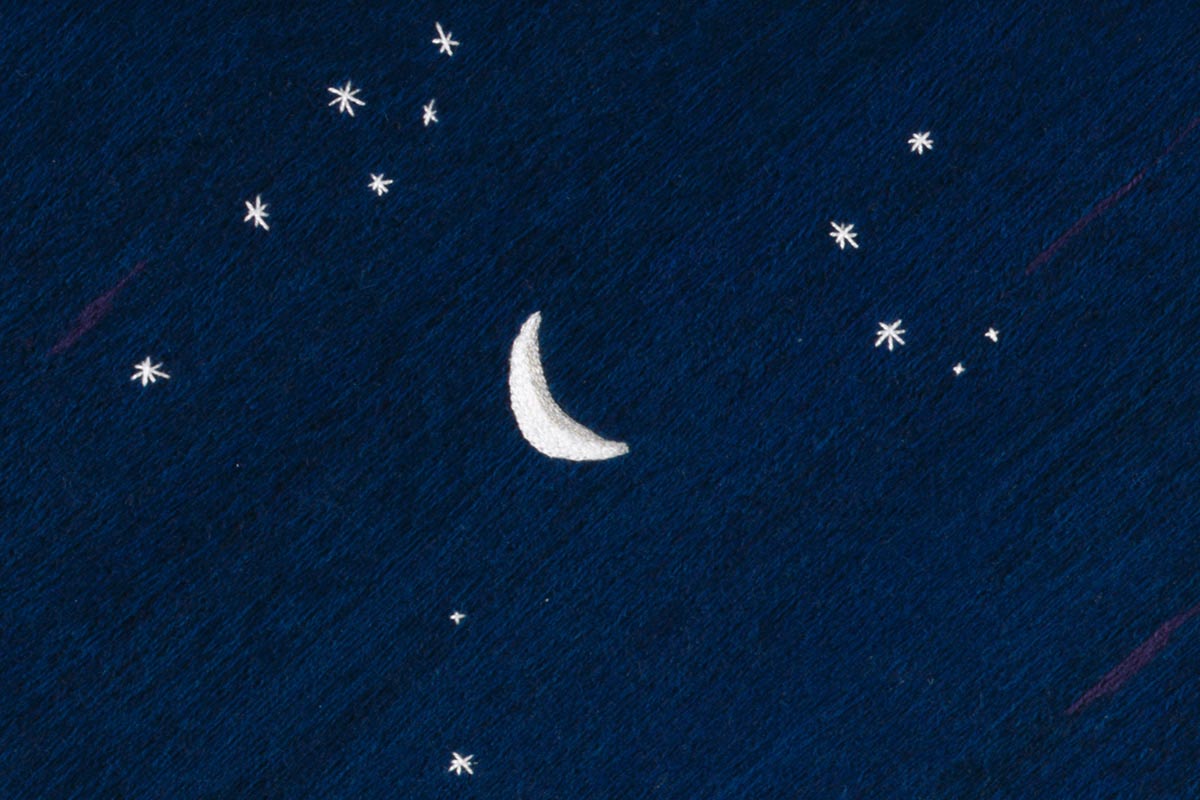A crimson thread carried by a silver embroidery needle loops through the centre of the work, drawing along with it papers symbolising legal documents and political events.
Over the course of its journey, the thread moves through fragments of Australian history. Images of seashells, flint and other discarded items from an Aboriginal midden float up from the land to meet new shapes thrown up by a curling wave.
Below, the landscape takes shape as a range of mountains changing from bush to farm to suburb. A road leads back into an unmarked landscape, which then gradually dissolves into the darkening sky. Scattered among the stars are small remnants of domestic life: a teapot, a cup and saucer, and a knife and fork.
Panel one: A collapsing mountain
Sharon Peoples’ narrative design for the Crimson Thread of Kinship begins with a cataclysmic disturbance of the land.
Margaret Thompson, embroiderer
Each of the three large shells in the first panel was worked on a slip and then applied so that it nestled into its shadow. The other shells were made with several layers of stitching.
Panel two: Documents
A cloud made of pieces of paper trailing across the sky was one of the first elements Sharon developed for her design. The papers represent documents, such as decrees, laws, land titles and propaganda.
Margaret Thompson, embroiderer
When we’d finished the big trees in the scenes, we thought it would be fun to add some white cockatoos. The ones in panel two have names — Peter, Paul, Mary and Anna. If you look closely you can see their sulphur crests.
Panel three: The suburbs
Once Sharon had developed the central elements of the design — the thread and the cloud of papers — she realised that ‘the landscape below needed to become more specific’.
Sharon Peoples, designer
I remembered I had been drawing and photographing Gungahlin (a new suburban area of Canberra) since 1992 — another domestic scene. In many ways the design is not unlike the Bayeux Tapestry: stories happening below the main images.
Panel four: The Crimson Thread
Sharon initially proposed a maroon-coloured wool for the thread element of the design. Once the embroiderers started working, however, they and Sharon decided to use a brighter crimson-red perle cotton in a different stitch — stem stitch — to ensure the thread stood out from the background.
June Mickleburgh, embroiderer
It was heavy physical work. You needed long arms to work the centre of each panel and sometimes we were practically lying on the frame. Surgical forceps helped pull the needle through the fabric when necessary.
Panel five: The road
Sharon included a long, straight stretch of road in her design to remind people of how most Australians only encounter the land beyond the suburbs by driving through it in a car.
Margaret Thompson, embroiderer
It was a difficult part of the embroidery. The stars kept getting lost in the soft wool threads, and it was almost impossible to make the cup and saucer look like a cup and saucer!
Panel six: The night sky
Early in the process of developing the design for the Crimson Thread of Kinship, Sharon travelled overseas. Flying over Brazil at night, she decided that the southern sky would become the main background for the embroidery.
Several years earlier, she had made small books of drawings of the night sky seen from suburbia, and she used these to develop her design.
June Mickleburgh, embroiderer
We loved the blue in panel six but there was a lot of stitching to fill the twill. We were blued out!
Explore more on the Crimson Thread
